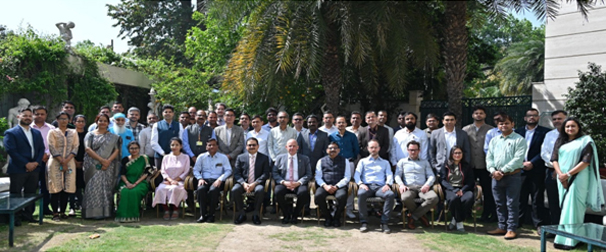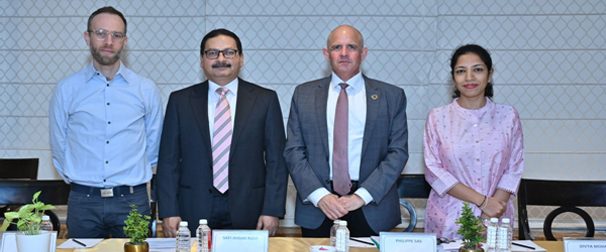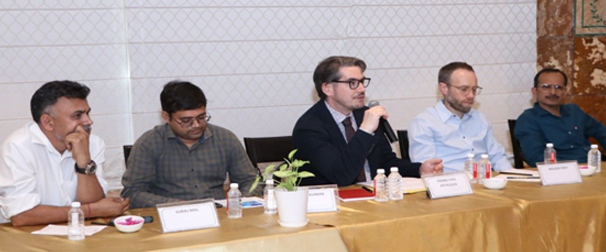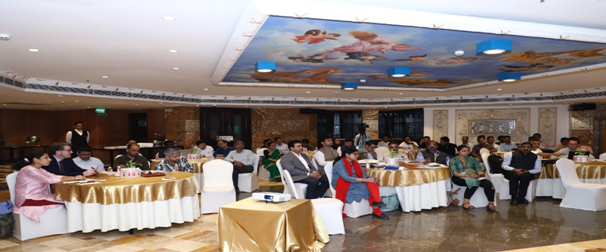


High in the Indian Himalayas, where glaciers feed mighty rivers and sustain millions, a silent threat is growing—Glacial Lake Outburst Floods (GLOFs). As climate change accelerates, these risks become more urgent, calling for global knowledge and local action.Through its ,SCA-Himalayas project, SDC is partnering with Indian institutions to strengthen climate resilience in this fragile region.
Under the project’s GLOF risk management component, cutting-edge hazard and risk assessments have been carried out for South Lhonak and Shako Cho Lakes in Sikkim. This vital work is being done in collaboration with the National Disaster Management Authority (NDMA), and the Government of Sikkim, including the Department of Science & Technology (DST) and the State Disaster Management Authority (SDMA).This Indo-Swiss partnership is not just about data and models—it’s about protecting mountain communities, ecosystems, and livelihoods from the growing dangers of a warming world.A two-day technical workshop (18th–19th March 2025, Hotel Royal Plaza, New Delhi) brought together 60 experts from National and State government agencies, scientists, community, academia, and private-sector innovators to strengthen disaster risk reduction, early warning systems, and climate resilience in the IHR.
Speaking at the Inaugural session, Mr. Philippe Sas, Head of International Cooperation at the Embassy of Switzerland, highlighted the Himalayas’ extreme vulnerability to climate change and emphasized mutual learning between the Indian Himalayas and the Swiss Alps for GLOF risk management He stressed the need to translate scientific knowledge into actionable policies, ensuring sustainability and community resilience.
Shri Safi Ahsan Rizvi, Advisor, NDMA, emphasized that active participation, coordination, and leadership are key to mitigating hazards. He highlighted the urgency of climate adaptation and disaster risk management to safeguard the Himalayas and protect vulnerable communities from Glacial Lake Outburst Floods (GLOFs).Recalling the October 3, 2023, GLOF from South Lhonak Lake, which severely impacted the Teesta Valley, he stressed the need for collective action to build a resilient and sustainable future.
Mr. Pierre-Yves Pitteloud, Senior Regional Advisor at SDC, emphasized that natural disaster management requires a multidisciplinary approach, integrating research, governance, and institutional coordination. He highlighted SDC’s commitment to hazard risk analysis and GLOF risk mitigation in the IHR, with Sikkim leading in innovative solutions. The workshop explored further mitigation measures and the enhancement of Early Warning Systems (EWS) and response mechanisms.This workshop provided a crucial platform for knowledge exchange, capacity building, and multi-sector collaboration with key themes like:
The workshop reaffirmed the urgent need for innovative technologies and proactive strategies to mitigate GLOF risks and safeguard Himalayan communities. As climate change accelerates glacier retreat and alters high-mountain environments, it is crucial to continuously evaluate evolving risks across the broader Himalayan region. Moving forward, a strong focus on science-based decision-making, regional collaboration, and community resilience will be key to adapting to the challenges ahead and protecting lives and livelihoods in vulnerable mountain landscapes.








